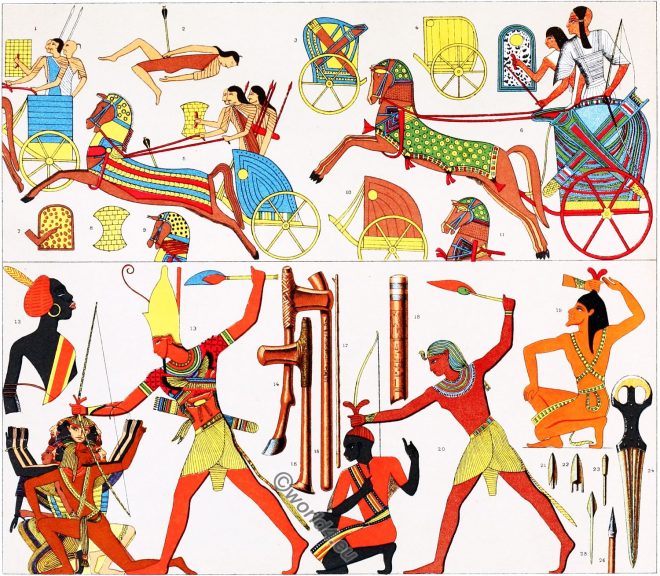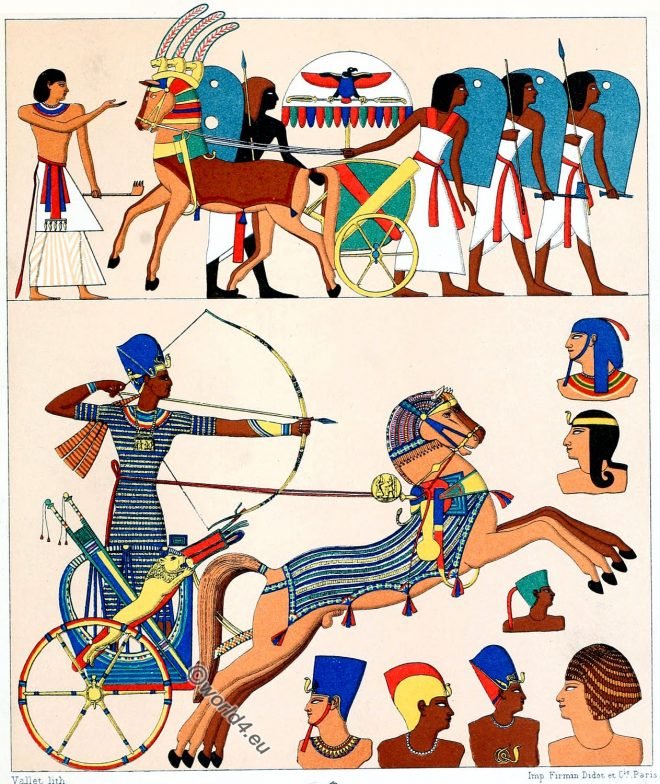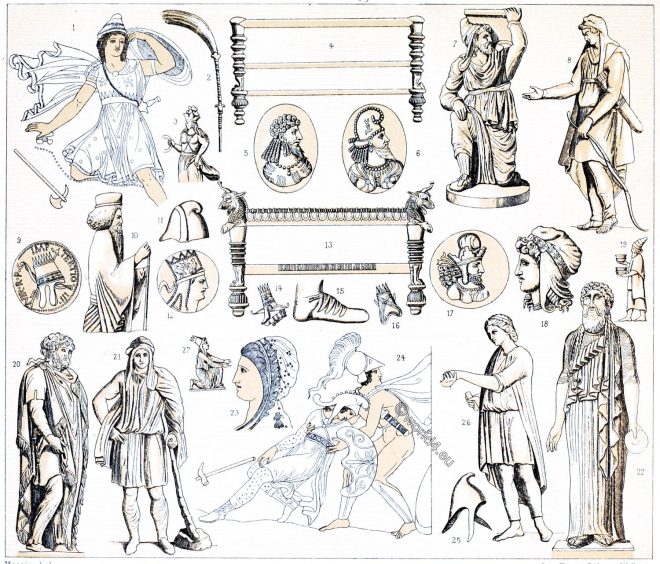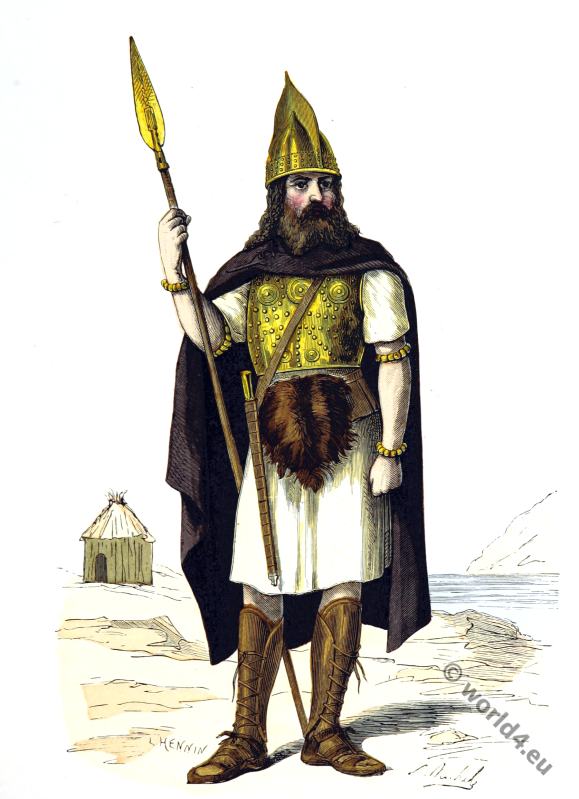Egypt. Hieratic paintings from Egypt and Nubia. Gods and Goddesses. Pharaos and Queens. The Schenti. The Klaft, Khat or Nemes headscarf. The Egyptian double crown. The Atef.
Tag: Ancient Military
Egyptian and Asian chariots. Warfare, Weapons. Different Nations.
Egyptian and Asian chariots. Warfare. Arming of the various ancient Near Eastern peoples. Egyptian chariots lined up in a line on the battlefields.
Egypt. War dresses. Headgear and various costumes.
The representations on this panel are taken from Upper Egyptian wall paintings. War dresses. Headgear and various costumes. The pharaoh in the fight. The war chariot. Vultures and sparrowhawks were the symbol of supreme power.
Costumes of Persia and Asia Minor. Furniture. Phrygian cap.
The Phrygian cap. Armenian tiara. The weapons of the Parthians. The costumes of Persia. Armenian. Pearl embroidered mitre. Anaxyrides. Amazons. The mitre and crown. Furniture.
Greece. Warriors of heroic and historical time. Leaders and Soldiers.
The armament of the heroic period. The Greek army. The Hoplit, the Peltast, The Rider, the Phalangit, the Archer, the victorious Warrior, the Great Goddesses of war and hunting, Athena and Artemis. The Purpure. Bourgeois costume at the time of Ptolemy.
Greek Military of Antiquity. Different types of Chariots and Armor.
War, race and triumphal chariots. Greek soldier. Leader in full armor. Different types of the Greek helmet and weapons.
Roman soldiers and gladiators. Function, armor and armament.
The legionnaires: The triarii, the impediti, the eques, the Centurio, the phaleratus, the military tribune – Caesar Imperator. – The signifer, the vexillarius. The gladiators: the mirmillo, hoplomachos, the retiarius.
Assyrian Blouses and Ensembles. Costumes common to both sexes.
Babylonian gown. Tunic, blouses and ensembles. Costumes common to both sexes. The Luxurious Assyrian Costumes
Merovingian costume of a 5th century Frankish warrior.
Costume d’un guerrier franc du 5ème siècle.
Gallic warrior. 1st century BC.
Gallic warrior. 1st century BC.










